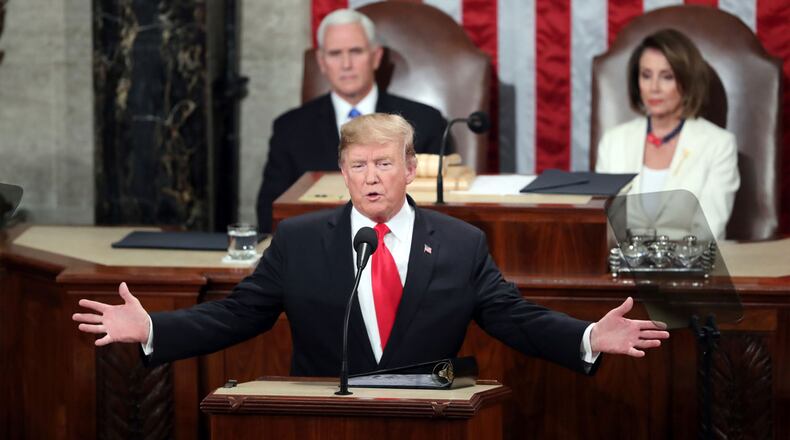RELATED: Overall highlights from Trump’s State of the Union speech
In Ohio, K-12 students have the ability to attend free charter schools, including online schools, rather than their local public schools if they wish. But brick-and-mortar charter schools can only open in school districts that the state defines as low-performing. Ohio students in low-performing schools also are eligible for state-paid vouchers to attend private schools.
Trump’s only other mention of education was a passing reference to schools and hospitals that he said are “overburdened” because of illegal immigration.
In the Democratic response, former Georgia state Rep. Stacey Abrams called for more investment in schools, for gun safety measures to ensure safe schools, plus efforts to address the rising cost of college and “the crippling effect of educational loans.”
RELATED: Local woman sits next to First Lady during speech
Teachers unions, which consistently align with Democratic Party principles, criticized Trump for his light treatment of education issues. National Education Association President Lily Eskelsen Garcia said investing in public education and protecting schools from gun violence should be higher priorities than a border wall.
“The contrast between President Trump’s speech and Stacey Abrams’ response was palpable and powerful,” added American Federation of Teachers President Randi Weingarten. “Abrams talked about what ordinary Americans need to seize their futures, while the president said not one word about either the shutdown or public education.”
U.S. Secretary of Education Betsy DeVos, a Trump appointee, applauded Trump’s call for increased school choice, calling it an issue of “education freedom.”
RELATED: Ohio lawmakers react to Trump’s speech
“Too many American students are far too limited by the current education ‘system’ that assigns them to a school building based solely on where they live,” DeVos said. “That means their family income largely dictates their education options.”
JoAnn Bartoletti, executive director of the National Association of Secondary School Principals, said while explicit mentions about schools were few, Trump “actually said quite a bit about education” in running through a list of great American accomplishments.
“(Those) reflect a uniquely American commitment to draw out the best in each person,” Bartoletti said. “Buzz Aldrin and generations of great Americans launched their dreams in a robust system of public education that releases the full potential of every child in our nation.”
EDUCATION: Top state and local school stories of 2018
Bartoletti also said Trump’s inflammatory rhetoric on immigration has marginalized immigrant students in America’s schools. And she called for fair treatment of students of color after the Trump administration recently rescinded 2014 federal guidance on school discipline equity.
Trump made no mention of school safety, or state progress under the new federal education law, or efforts to deal with higher education funding and the student loan crisis.
Multiple groups said they hoped that Trump’s mention of renewing the nation’s infrastructure would include a commitment to the Rebuild America’s Schools Act, recently introduced in the U.S. Senate.
The Center for Education Reform, a pro-charter school group, praised Trump’s call for increased school choice, citing low national test scores and degree attainment.
RELATED: Local charter schools, Dayton Public have similar scores
“A major reboot in federal education priorities is long overdue,” the group said in a statement, calling for legislation that would “provide hope and expanded opportunity for our most vulnerable students.”
About the Author

